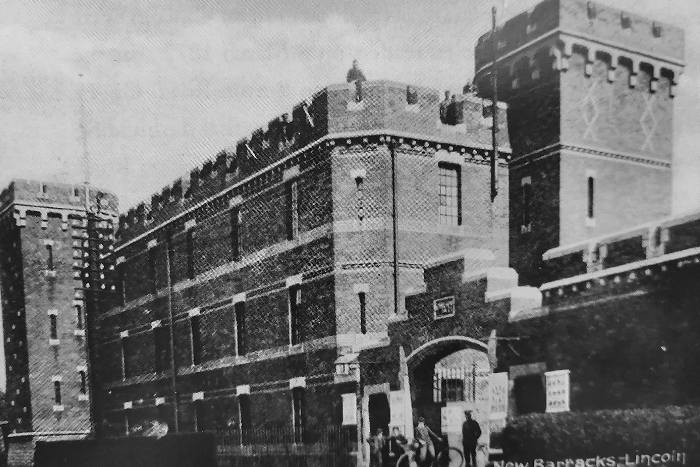
The city’s ‘new’ barracks
Andrew Walker of the Survey of Lincoln explores the history of a complex of military buildings on the north-east side of Burton Road.
Burton Road is unusual in accommodating two sites which have served as military barracks. The older of the two, built in 1857 and used by the military until 1969, is now the home of the Museum of Lincolnshire Life.
The new barracks were built following a major reform of the army undertaken by the Secretary of State for War, Edward Cardwell.
Under the Localisation Act of 1872, he divided the country along county boundaries and population density and reorganised regiments into these areas, which it was hoped would aid recruitment. The building of new barracks then took place, offering improved conditions for army personnel.
Lincoln builders William Huddleston and Son erected the barracks for just under £50,000. Most of the bricks used in the construction, as the Lincolnshire Chronicle reported in October 1878, were manufactured locally from the Lincoln brickworks of Messrs Swan Brothers. The land secured for this purpose comprised 21 acres, with seven acres used for the buildings and parade ground.
By December 1878, the barracks were occupied by 100 officers and men of the Tenth North Lincolnshire Regiment of Foot. The barracks formed the depot of the regimental district number ten that included the first and second battalions of the Lincolnshire Regiment (Tenth Foot), and of the Royal Northern Lincolnshire Militia, which formed the third battalion.
The barracks complex was similar to many built following Cardwell’s reforms, designed in a Gothic architectural style, with a prominent central ‘keep’, serving as an armoury. The roof and floor of the armoury were made of fireproof concrete.
The site also included officers’ quarters, a hospital, a laundry, quarters for married men, and workshops for painters, carpenters, and armourers. A drill shed for use in wet weather was also built, together with a water tower and pumping engine. The barracks were enclosed by a substantial wall, with a bastion at each corner.
Nearly 75 years after its opening, the complex was renamed the Sobraon Barracks in 1953, remembering the Lincolnshire Regiment’s most famous victory on 10 February 1846 in the first Anglo-Sikh War of 1845-6. Other references to the Regiment’s past military honours in Egypt in the early 19th century are represented in the barracks’ architecture, including the stone sphinx badge on its façade.
One of the most newsworthy incidents which occurred at the barracks in its early years took place in the officers’ accommodation. This involved Maud Hunt, the daughter of a captain and quartermaster. The Dundee Courier headlined the story ‘A plucky lady fells a burglar’. She saved her father by disarming the intruder of a sword bayonet and applying several hard blows to his head with a pair of fire tongs.
On occasion, troops at the barracks were called upon to provide support for the civil authorities at times of unrest, such as during the Lincoln Riots of August 1911, when, on 20 August, 80 men of the Lincolnshire Regiment, khaki-clad and with rifles on their shoulders, marched at 2am from the top of the High Street towards rioters, prompting their rapid dispersal.
Substantial sections of Sobraon Barracks were demolished in the 1970s. Much of the original site is now residential development, and the remainder houses the Lincolnshire Army Cadet Force and the 160 (Lincoln) Squadron Royal Logistic Corps.
The Survey of Lincoln’s new book, ‘Learning in Lincoln: A History of the City’s Education Buildings’, is available at Lindum Books, Bailgate, and Steep Hill Bookshop.
Top pictures shows a 1922 postcard of the barracks from the Maurice Hodson Collection.


